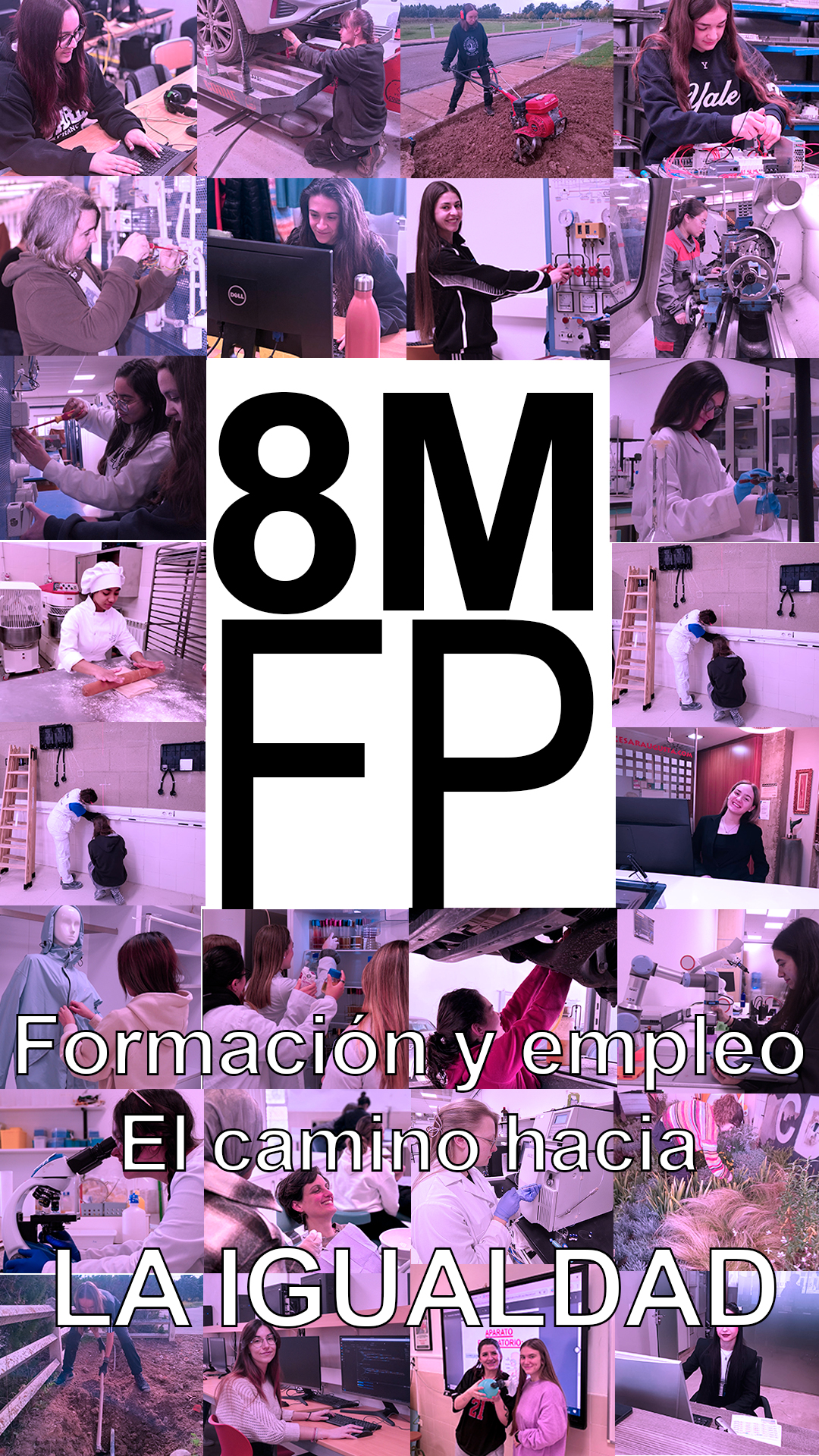
07 Mar 8M: Training and employment, the road to equality
On International Women's Day, from the Innovation Center for Vocational Training of Aragon (CIFPA) we claim the importance of training and employment to ensure equality in society.
The United Nations, for this year, has chosen as its theme: "For ALL women and girls: Rights. Equality. Empowerment". The aim is to claim the need to "expand equal rights, power and opportunities for all, with a feminist future in which no one is left behind". The United Nations considers that the empowerment of the next generation is at the core of this idea, since youth, especially young women and adolescent girls, will be the protagonists of lasting changes in the future.
CIFPA reminds that there can be no empowerment without training and therefore, Vocational Training offers very different opportunities for all women and guarantees lifelong learning and employability opportunities.
The 8M as International Women's Day was adopted by the UN General Assembly in 1977, although two years earlier it had already begun to be commemorated. Its origin lies in the demonstrations of women who, especially in Europe, demanded at the beginning of the 20th century the right to vote, better working conditions and equality between women and men.
Coinciding with the 8M, the Ministry of Education, Vocational Training and Sports has published the Equality in Figures' report. With respect to Vocational Training, the number of female students accessing the different degrees continues to increase year after year, as well as the rate of graduates, which in some cases exceeds that of men.
In this report and, according to the Ministry, the percentage of female students in vocational training, traditionally lower than that of male students, has grown in recent years. In Middle Grade it has gone from 43.9% in the 2012/2013 academic year to 45.7% in the 2022/2023 academic year. The Higher Grade has maintained the level of a decade ago, but the number of female students has increased from 161,981 to 280,011. In addition, the report shows how the rate of women obtaining the Higher Technician degree is higher than that of men (37% compared to 33.4%) and has also grown ten points in the last decade. In the intermediate level of vocational training, the rates are practically the same for women, 27.7%, and for men, 27.8%.
The professional families where there are more women are Personal Image, Health, Textile and Sociocultural and Community Services. Those with the least number of women are Installation and Maintenance, Transportation, Electricity and Electronics, and Mechanical Manufacturing. The objective continues to be to break the gender gap in some professional families in which the presence of women is still a minority, although they have a high level of employability.


